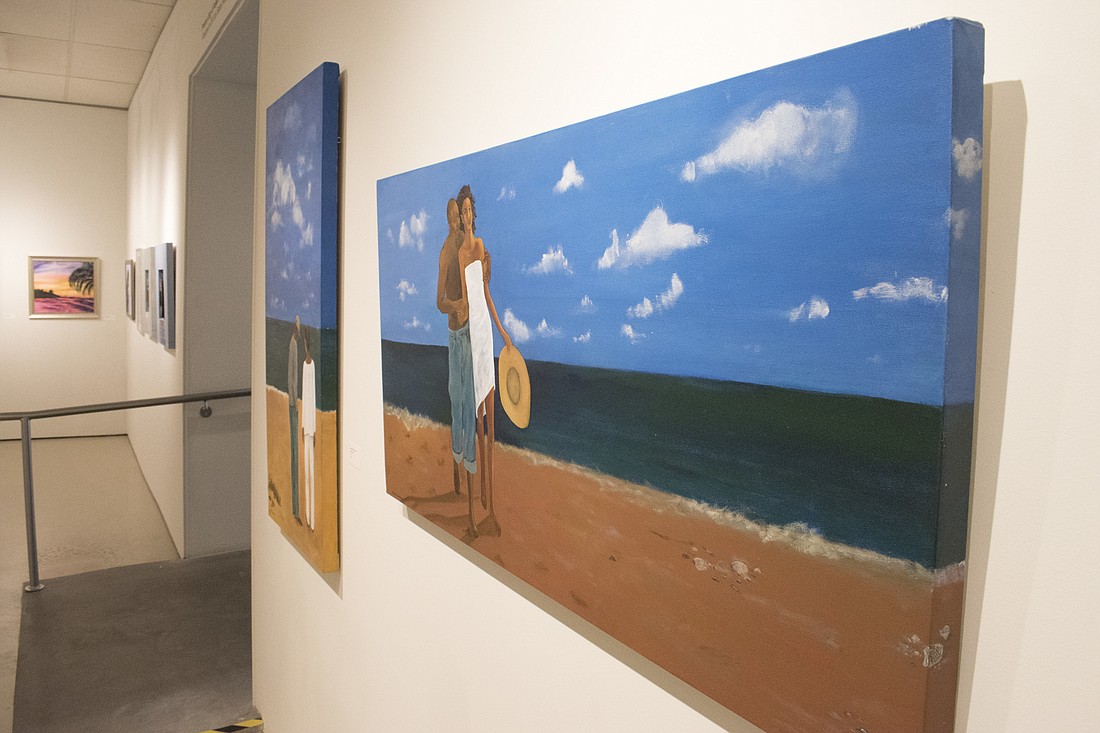- November 23, 2024
-
-
Loading

Loading

Sarasota is renowned for its expansive art scene — but the ethnic color palette of the artists who are celebrated doesn’t often extend past a few hues.
The Association for the Study of African American Life and History recognized this 20 years ago when Ernestine Harris, founding Manasota chapter president, decided to start an art exhibit for African-Americans. She asked member and now exhibit organizer Barbara Mask to bring together a group of artists of color, and the result was a small yet impactful display in one of the recreation rooms at The Meadows.
“The purpose of ASALH is to promote the art and culture of African-Americans to the larger community, so we feel like an art show is one way to do that,” Mask says. “As far as I know, it’s the only art exhibit of artwork of black Americans in Sarasota.”
The work selected is created by ASALH members — some professionals. Others create simply because it’s what they love to do. All are celebrated regardless of their previous experience, and their mediums range from painting and drawing to ceramics and sculpture.
Eleanor Merritt is one of the participating artists, and her work has been a part of the exhibit so long, she’s lost track.
Merritt says the goal of the exhibit, which is purposefully tied to Black History Month every year, is to give exposure to African-American artists and allow them the opportunity for their work to be appreciated — and sometimes that appreciation turns into a monetary reward when collectors like what they see.
Art Center Sarasota Executive Director Lisa Berger says that in the past five or six years the exhibit has been at the center, it has grown in both quantity and quality. This year, 15 African-American artists have work on display, and over the course of the evening at its Feb. 1 opening reception, a record 700 people visited the exhibit.
“I think it’s really important for diversity because this town skews white and doesn’t have a lot of diversity,” Berger says. “And it brings new people to the center.”
Mask believes African-American artists are slowly gaining more of a presence in Sarasota. But big institutions like The Ringling are all about the national artists (take its current exhibit of Hank Willis Thomas’s “Branded/Unbranded,” for example), so she says “Black Muse” is important for its dedication to local artists.
Merritt notes that though they weren’t encouraged to be painters for a long time, white women have long been the subject of art. A walk through the Ringling Museum where she was a docent for 25 years will reveal many portraits of regal female subjects — though often scantily clad or nude.
“Black Muse” is important, she believes, because it gives African-Americans the chance to see themselves in art.
“Because many of the images in the “Black Muse” deal with the black experience, I think that’s what makes it so popular for people of color,” she says. “Those of color can identify immediately with seeing a painting that shows someone who looks like them. That’s a very personal connection.”
And seeing African-American subjects helps people of other ethnic backgrounds put themselves in their shoes, she adds.
“It’s important to learn something different,” she says. “To be able to see images that they haven’t enjoyed before and to see another point of view and another ethnic interpretation of the world they live in.”
As the head of an art gallery, Berger enjoys facilitating this opportunity for visitors of all backgrounds — so much so that she books this exhibit every year before anything else in February.
“We’re celebrating a culture that a lot of people aren’t familiar with, and they love it,” Berger says of exhibit viewers. “Everybody comes to see this because there isn’t really anyone else in town celebrating African-American artists.”
Mask hopes the exhibit can continue to inspire both artists and non-artists alike, but she particularly hopes it can be inspiring for young people who have an interest in art.
“I hope it’s encouraging for them and they know that the larger community has an opportunity to see their work,” she says. “Hopefully it’s a stimulus and an encouragement for young black artists, otherwise they wouldn’t have much of an outlet.”